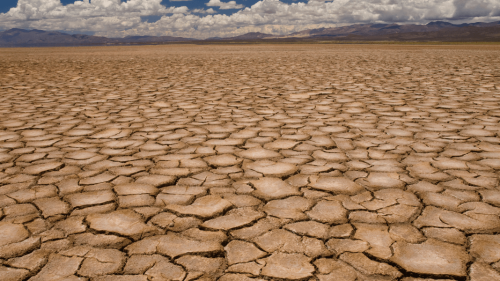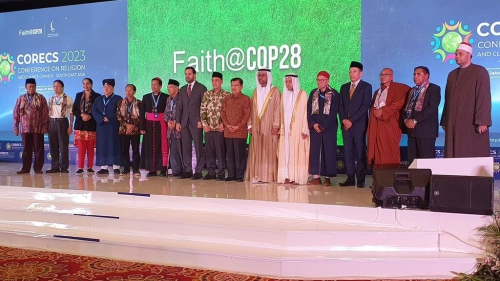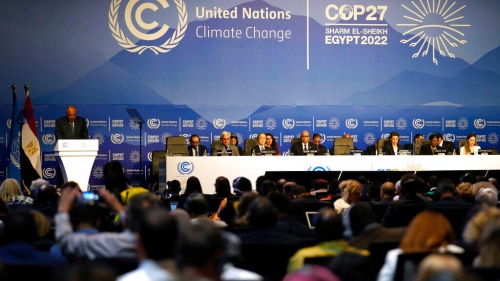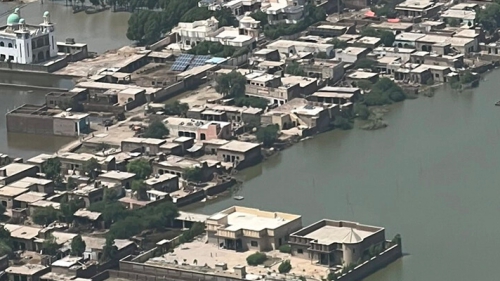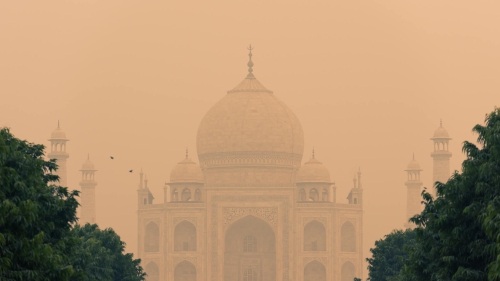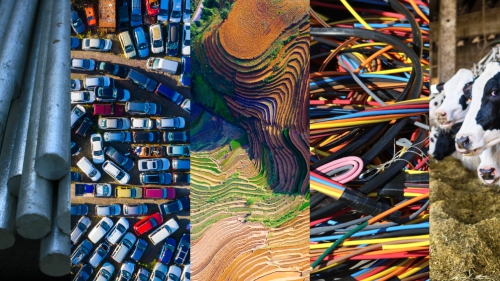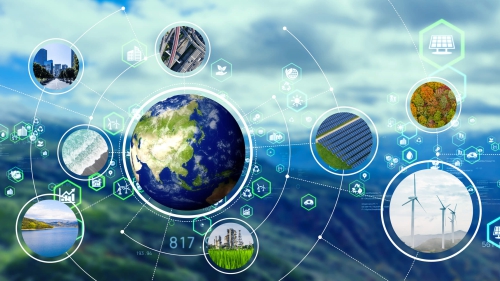Climate Change: A Common Enemy of South Asian Neighbors

In the complex tapestry of South Asian geopolitics, where historical tensions often overshadow collaborative efforts, one issue stands out as a unifying force: climate change.
As extreme weather events batter the region, from devastating floods in Pakistan to erratic monsoons in India, it's abundantly clear that climate change knows no borders.
The impacts of climate change in South Asia are not just abstract projections; they are stark realities affecting millions of lives. Rising temperatures, changing rainfall patterns, and sea-level rise are not distant future scenarios but present-day challenges demanding urgent action. In the face of this crisis, the traditional fault lines of regional politics must give way to a collective response grounded in solidarity and cooperation.
One of the most significant obstacles to addressing climate change in South Asia has been the historical animosities and geopolitical rivalries that have long defined the region. The Indo-Pakistani rivalry, in particular, has often dominated the discourse, overshadowing issues of common concern. However, as the impacts of climate change become increasingly undeniable, there is a growing recognition that no nation can confront this challenge alone.
In recent years, we have seen promising signs of regional cooperation emerging. SAARC could be an effective platform to handle such issues but the forum is inactive since 2016. Despite these challenges, the water sharing mechanism formed under IWT is working efficiently perhaps for the reason that World Bank is the guarantor.
At the heart of this collective effort lies the recognition of climate justice and equity. South Asia, despite contributing minimally to global greenhouse gas emissions, bears a disproportionate burden of the impacts of climate change. India, as the largest emitter of greenhouse gases in the South Asian region, accounts for a significant portion of the total emissions from SAARC countries, estimated to be around 7-8% of global emissions.
Pakistan follows closely, also contributing to a notable portion of the total emissions, estimated at around 0.8-1% of global emissions. Bangladesh's emissions, though comparatively lower than India and Pakistan, are still significant within the SAARC context, estimated at around 0.3-0.4% of global emissions.
Sri Lanka's emissions are relatively lower compared to the larger SAARC nations, estimated at around 0.1-0.2% of global emissions. Nepal, with its smaller population and economy, has even lower emissions, estimated at around 0.05-0.1% of global emissions.
Additionally, other SAARC countries such as Afghanistan, Bhutan, and the Maldives also contribute to GHG emissions within the region, although their contributions are comparatively smaller. Vulnerable communities, often marginalized and impoverished, are the hardest hit by extreme weather events and environmental degradation.
Therefore, any response to climate change in South Asia must prioritize the needs and voices of those most affected, ensuring that no one is left behind in the transition to a more sustainable future. India, as the largest emitter in the region, has spearheaded initiatives like the National Action Plan on Climate Change (NAPCC) and the International Solar Alliance (ISA) to mitigate emissions and promote renewable energy.
Similarly, Pakistan has implemented its National Climate Change Policy, while Bangladesh has shown resilience through its Climate Change Strategy and Action Plan, particularly in adapting to rising sea levels and cyclones. Sri Lanka's Climate Resilience Improvement Project and Nepal's community-based adaptation efforts also underscore the region's commitment to climate action.
However, when comparing with regions like the European Union (EU) and the African Union (AU), South Asia still lacks extensive climate cooperation frameworks, highlighting the need for enhanced regional collaboration to tackle the shared challenges of climate change effectively.
Policy-wise, there is much that South Asian nations can do to mitigate and adapt to the impacts of climate change. From investing in renewable energy infrastructure to implementing robust disaster preparedness measures, the opportunities for meaningful action abound.
However, such efforts must be underpinned by a commitment to transparency, accountability, and inclusivity, with governments actively engaging civil society, academia, and grassroots organizations in the decision-making process.
Therefore, the following recommendations are proposed for South Asian nations:
Strengthen Regional Collaboration: Prioritize enhancing cooperation within existing platforms like SAARC for climate change mitigation and adaptation strategies.
Invest in Renewables: Incentivize investment in solar, wind, and hydroelectric power to reduce reliance on fossil fuels and cut greenhouse gas emissions.
Enhance Disaster Resilience: Develop comprehensive disaster plans with early warning systems and resilient infrastructure to mitigate extreme weather impacts.
Promote Climate Education: Raise public awareness through campaigns and programs to foster understanding and sustainable behaviors.
Ensure Equity: Ensure climate policies prioritize marginalized communities, empowering them in decision-making and adaptation efforts.
Advocate for Global Action: Actively engage in international climate forums, advocating for ambitious emissions reductions and support for adaptation in developing countries.
In conclusion, as South Asia stands at the crossroads of climate crisis and geopolitical transformation, there is a clear imperative for unity and solidarity. By transcending historical divisions and forging a path of cooperation, South Asian nations can confront the existential threat of climate change and chart a course towards a more sustainable and resilient future for all.
The time for action is now, and the stakes could not be higher. Let us seize this moment and stand together in the fight against climate change.







